Peter Paul Rubens in 10 Paintings
A Baroque master and portraitist of the royals, Peter Paul Rubens is probably best known for his often drama-filled religious and mythological...
Anna Ingram 30 May 2024
19 May 2023 min Read
Everyone knows The Girl with a Pearl Earring. She is the icon of European painting and considered one of the most famous female portraits – but is this really a portrait? You might be surprised to learn that the world-famous “Dutch Girl” never existed in real life and she was just a tronie. Read on to find out what is a tronie and what are other famous examples of tronies!
Tronie is a genre that developed exclusively in the art of the Dutch Golden Age and Flemish Baroque. You can translate the word from Dutch as “face” or “expression”. It refers to a physiognomical study of a “typical” human character. Artists turned to the tronie for many reasons. For example, it presented a unique opportunity to experiment with facial expressions and lighting. The painter had an opportunity to enhance or display his/her skills through certain challenging aspects of the painting such as an extravagant facial expression. They were basically character studies for later use in history painting and played an important role during an artist’s training in a workshop.
The difference between a portrait and a tronie is that a portrait depicts an existing individual (often commissioned by a sitter or someone close to them), whereas tronies were created freely in workshops as means of training and circulated in the open art market.
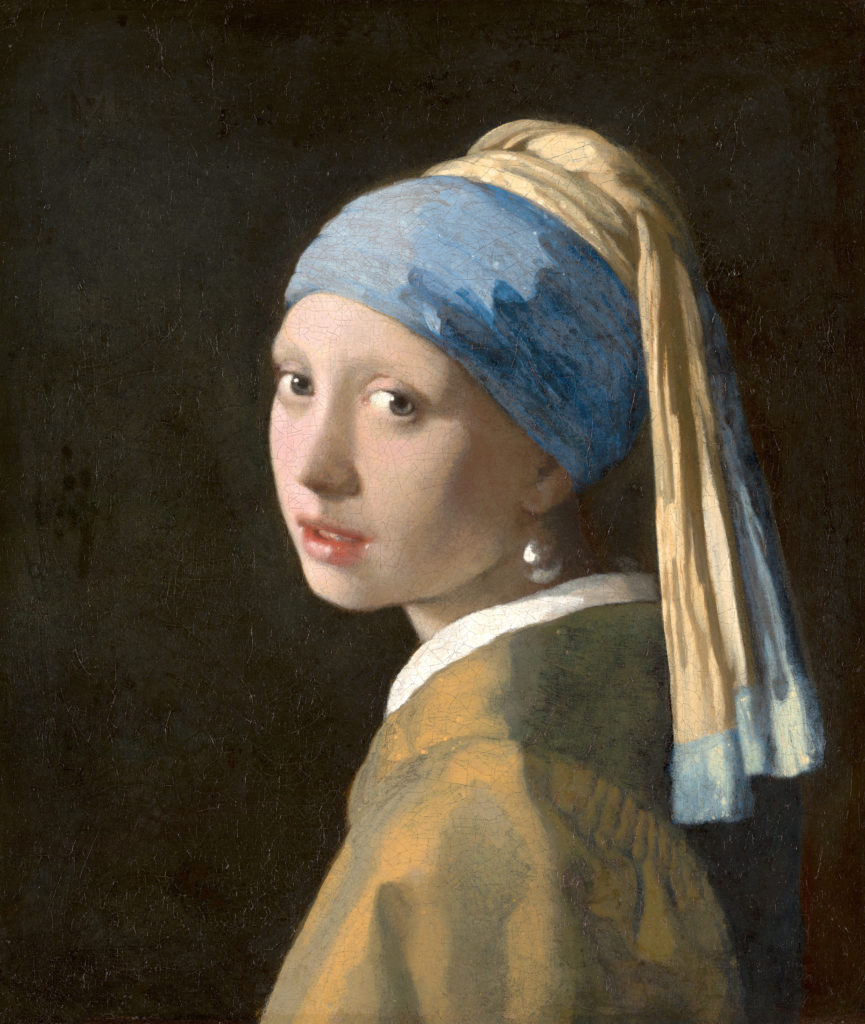
The most famous tronie is without a doubt The Girl with a Pearl Earring by Johannes Vermeer (1632-1675). The painting depicts a Dutch girl dressed in an oriental costume with a turban and an excessively big pearl earring. She is sometimes referred to as ‘’The Mona Lisa of the North’’ due to the mysterious look in her eyes that makes her expression unrecognizable. The painting inspired a novel which, in turn, led to a movie and a play. Vermeer displays his mastery over light, as seen in the softness of the girl’s features, the shine on the pearl, and the flickering light on her parted lips.
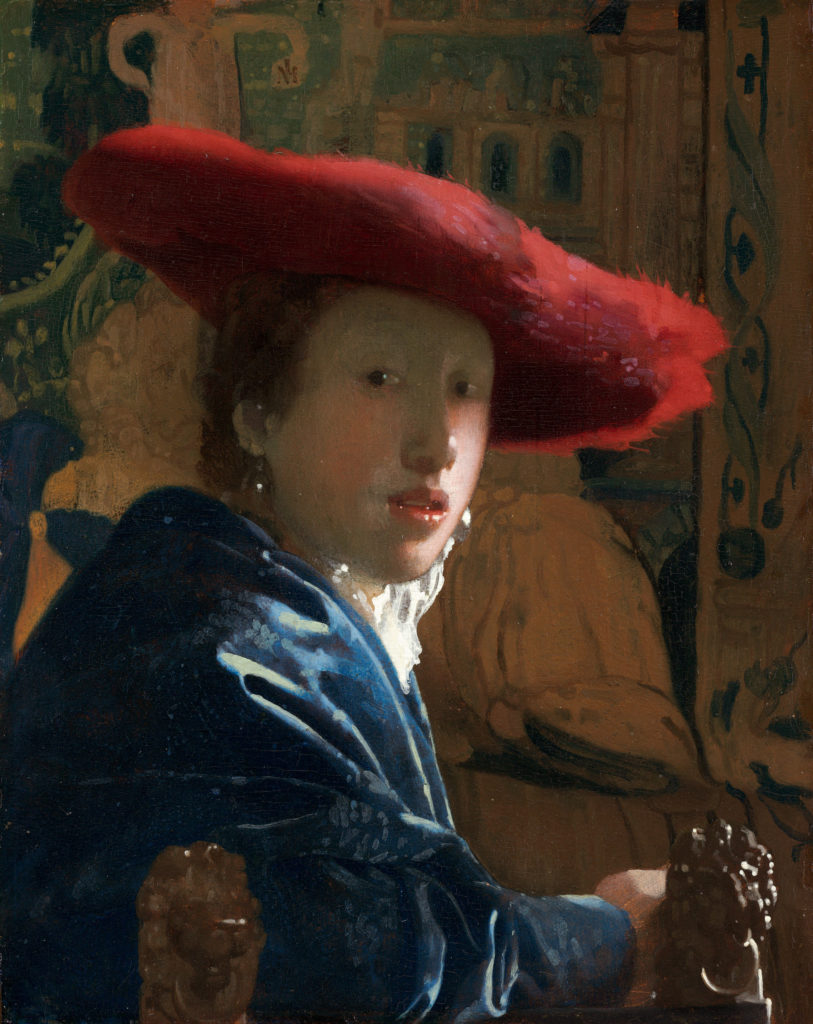











A girl wearing a lavish red hat leans against a chair and directly engages the viewer. It is an intimate piece and one of the smallest works by Vermeer. The sumptuous red of the girl’s hat along with the lush blue of her clothes are the most arresting features of the painting, emitting a sense of warmth. The light caresses her face and puts a shine on the pearl earrings she is wearing. The young woman’s lips are parted in an expectant expression.
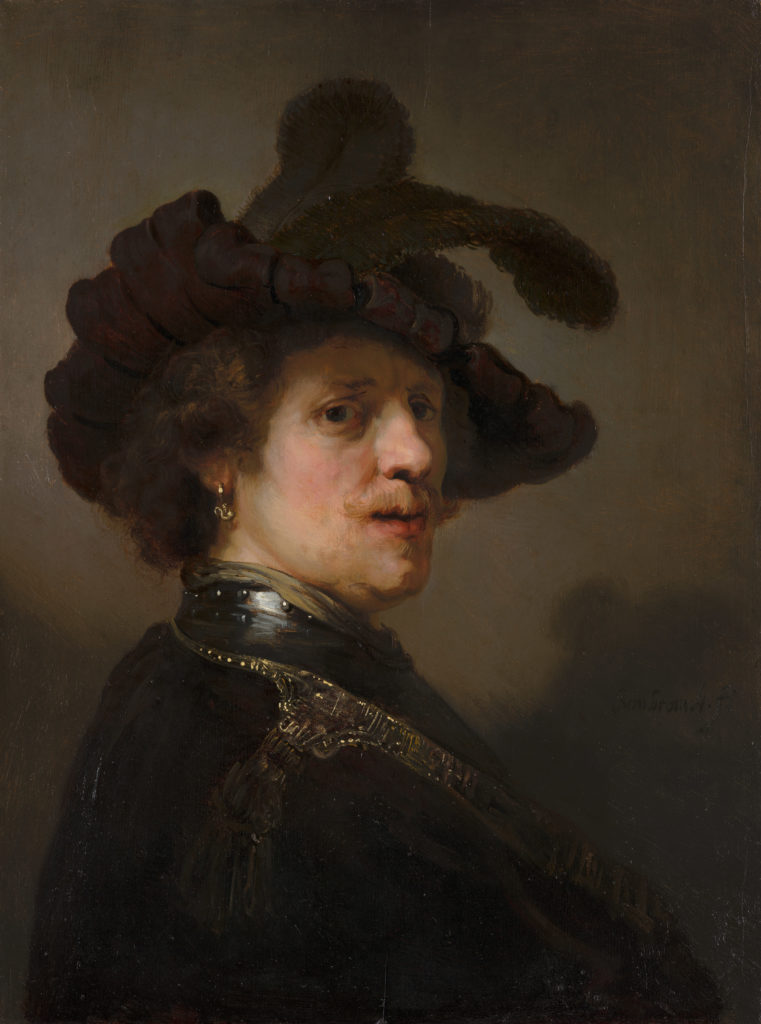











A man turns his head and looks at the viewer with an annoyed or arrogant expression. Rembrandt (1606-1669) imagined an eclectic, old-fashioned costume for this character, a soldier as marked by the metal collar, called a gorget, on his neck. He is dressed in a grand black feathered beret with an ostrich feather, highlighted by the monochrome background, a cloak with gold embroidery, and a gold earring. Each element of the costume is used to demonstrate the painter’s skillful technique. It seems that Rembrandt used his own features as a template for the character’s face as he bears a resemblance to the painter.
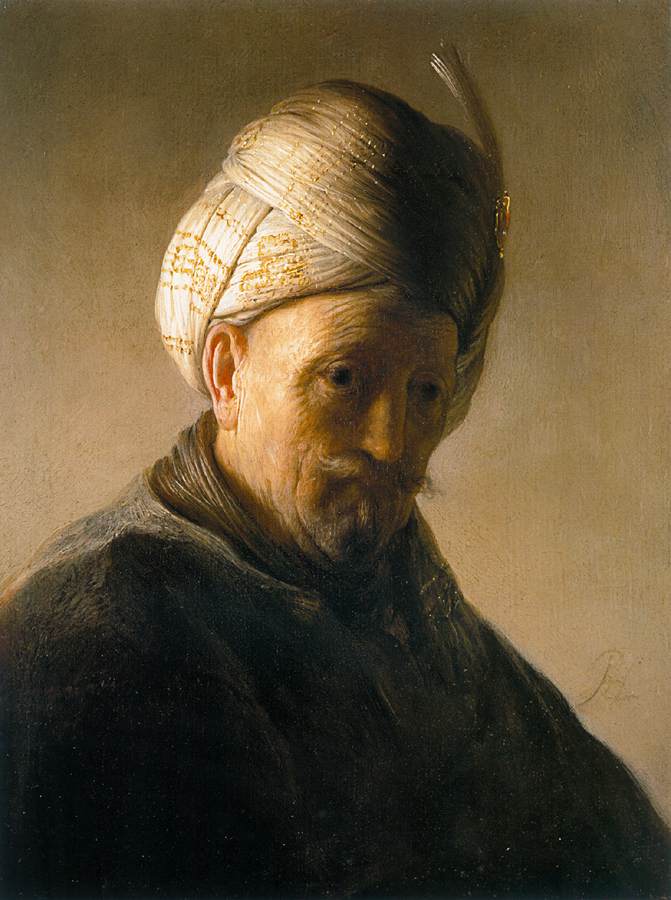











This is one of Rembrandt’s earliest tronies. Essentially, it is a study of lighting, a way for the artist to experiment with lighting effects. Here the light comes from the background casting a strong shadow on half of the man’s face. The transition from light to shadow is subtle and masterfully executed. Strong contrasts shape the figure’s face as his lines and wrinkles catch the light; his nose and beard reflect light as well. The old man is wearing an ornate turban with sparkling gold embroidery while the red gem on the clasp brightens the shadow area.
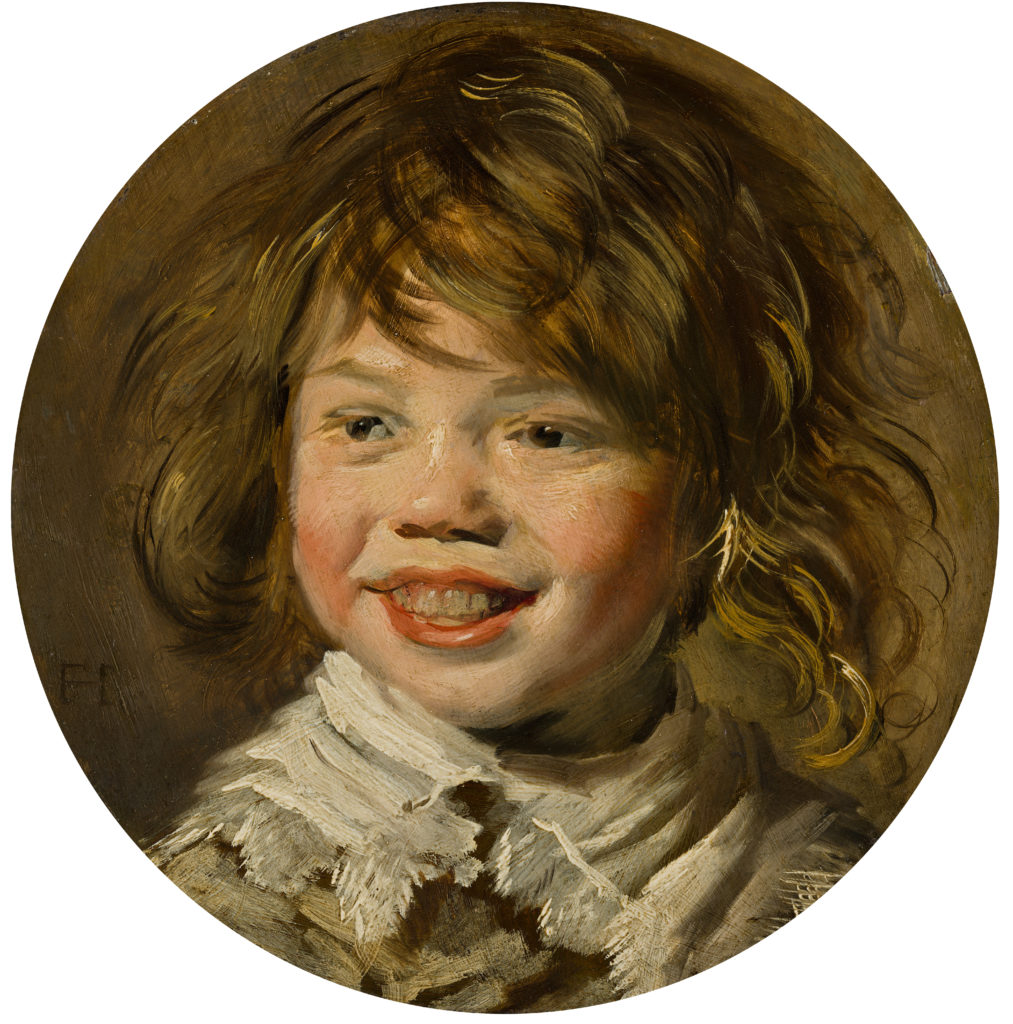











A young boy bursts into a buoyant laugh. He has seen something outside the painting that has lifted his spirits. Frans Hals (1582-1666) has succeeded in the challenging task of capturing the boy’s impulsive expression, one that we seldom see in this 17th-century Dutch painting. The artist painted the boy in his distinctive style of energetic but careful brushstrokes, adding to the cheerful atmosphere of the piece. Considering the spontaneity of the theme and the execution, it is no wonder that the Impressionists of the 19th century deemed Hals their forerunner.
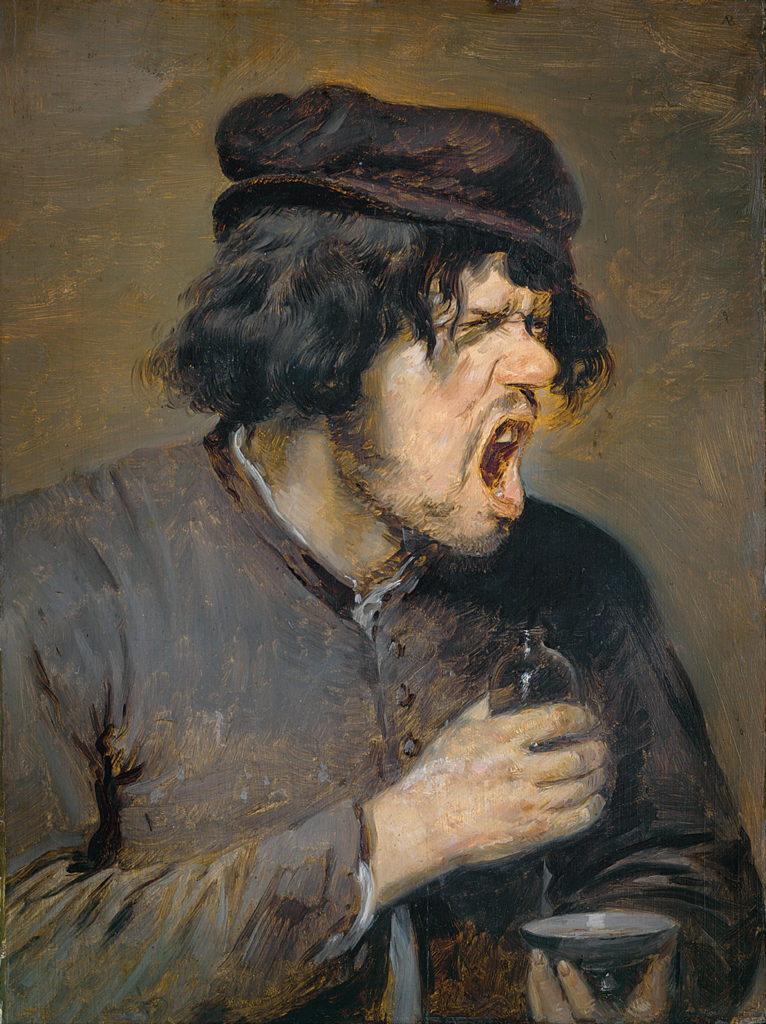











This man must have swallowed something extremely foul tasting. His features have deformed expressing utter disgust, an emotion so violent, the viewer almost feels it. His clothes and cap are simple and worn; he is probably a peasant. The artwork is dedicated to the sense of taste but with a twist. This is something very unusual as we rarely see paintings with people actually eating or drinking. Such aspects make the painting unique. The work is by Flemish painter Adriaen Brouwer (1606-1638). Brouwer loved to paint peasants and genre scenes usually set in taverns and instill his subjects with intense emotions.
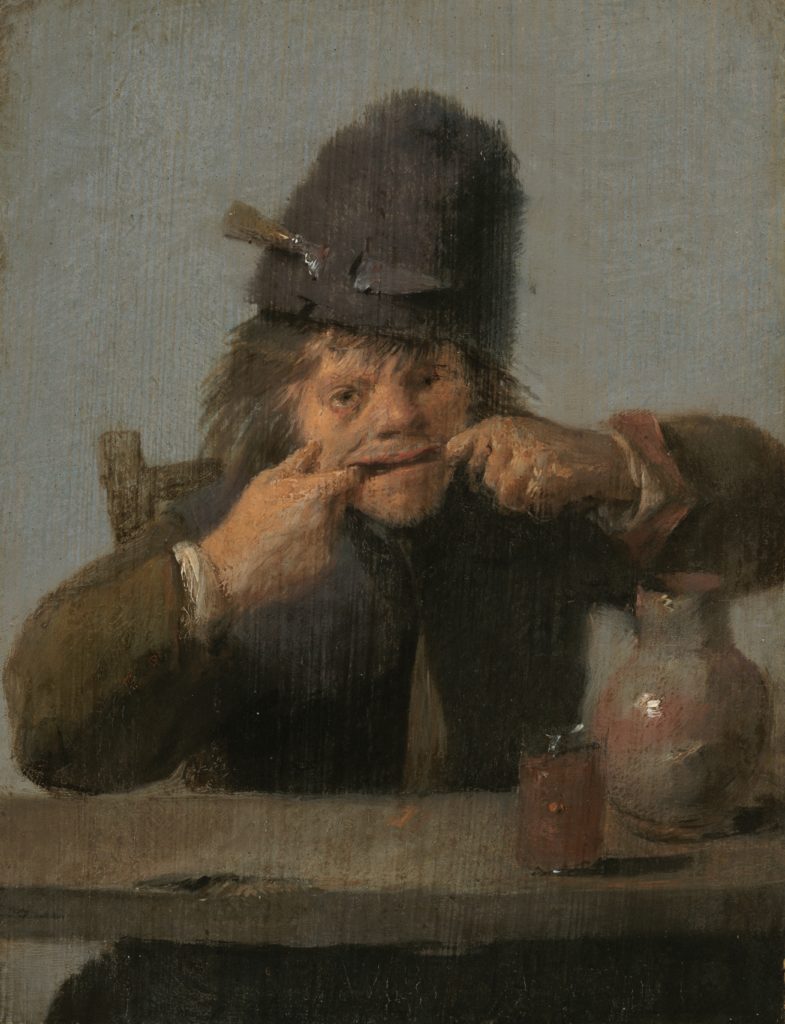











Yet another piece by Brouwer. A young man looks at the viewer and makes a mocking gesture. He is a peasant, like the man in The Bitter Potion, and is portrayed as unrefined and ill-mannered, a stereotype according to the city dwellers of the 17th century. The painter presents the coarse behavior of peasants as a cautionary tale about their moral failings to instruct urban populations about proper behavior. However, he has managed to capture a very real and very shocking, if somewhat comic, expression. The painting style of small, dynamic brushstrokes reminds us of Frans Hals.
Tronies are a truly fascinating group of paintings. Through them, we perceive the creative spirit and imagination of the artists who conceived them. It is remarkable that even though tronies depict unidentified sitters, through the immediacy of their expression we feel like we know them.
DailyArt Magazine needs your support. Every contribution, however big or small, is very valuable for our future. Thanks to it, we will be able to sustain and grow the Magazine. Thank you for your help!